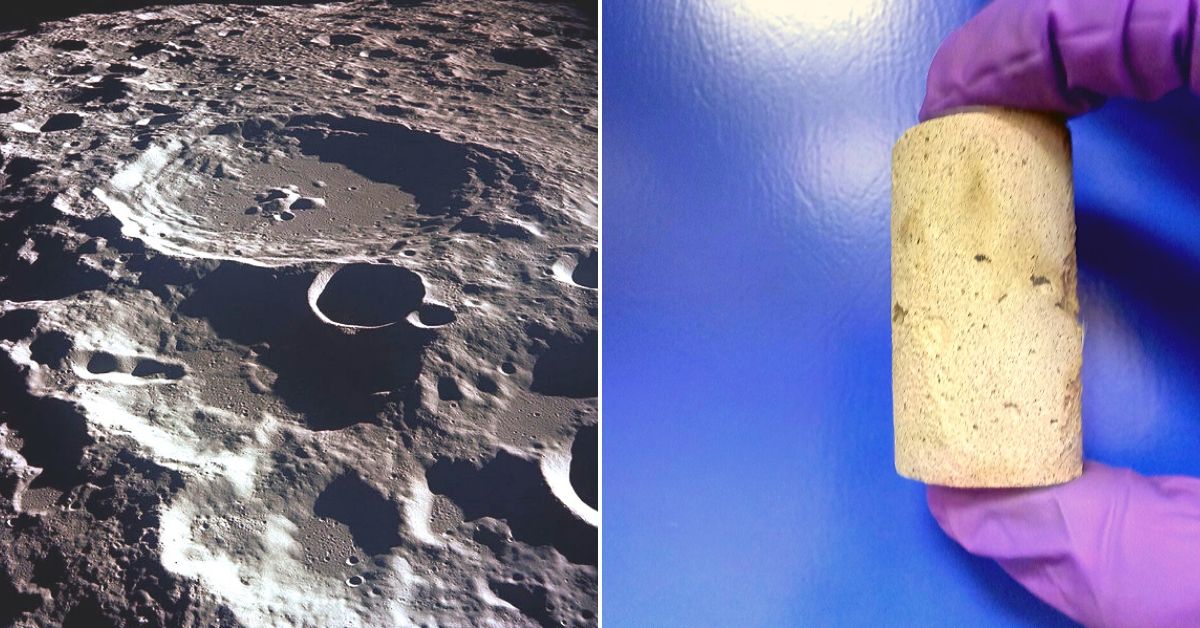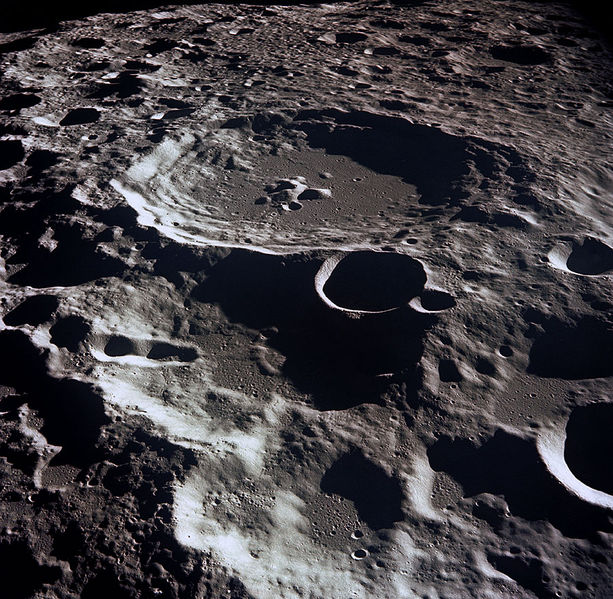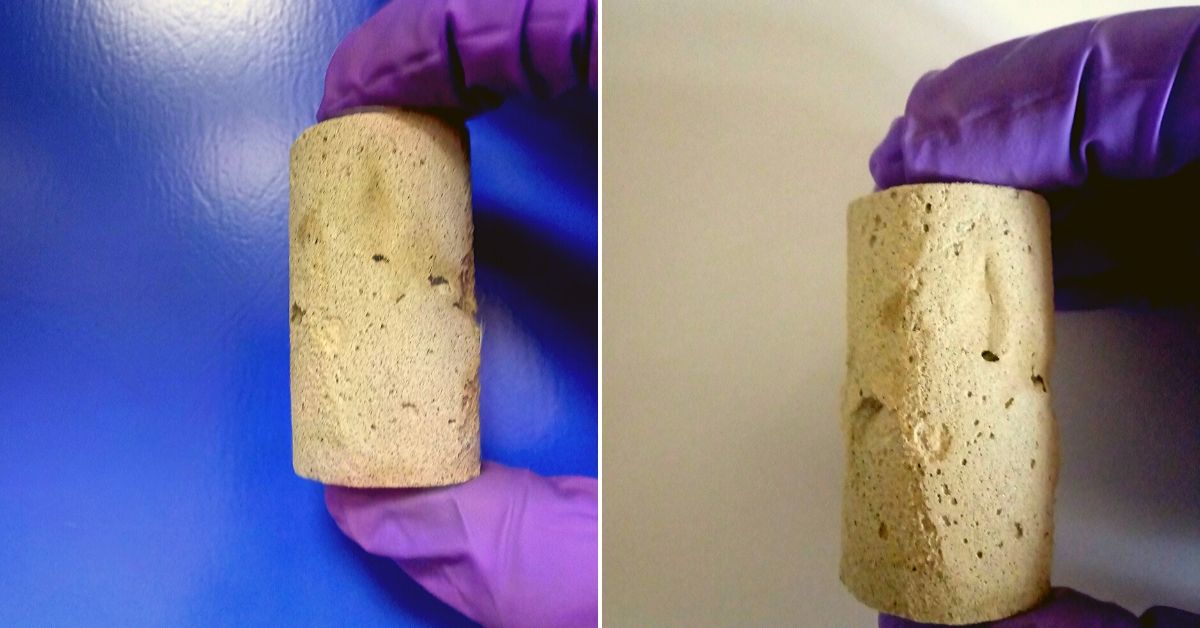IISc, ISRO Develop ‘Space Brick’ To Build Eco-friendly Homes on Moon & Earth
This is not just another brick in the wall. The properties of LSS match 99.6% with the samples brought back from Moon by the Apollo missions!

With the earth under increasing threat, scientists are now exploring how humans can inhabit the moon or planets like mars. Responding to this need, researchers at the Indian Institute of Science (IISc) and the Indian Space Research Organisation (ISRO) have developed ‘space brick’ that could assist the construction of future settlements on the moon and offer more eco-friendly options for constructions here on earth.
Led by Professor Aloke Kumar of IISc’s Mechanical Engineering department, the researchers have employed an ancient natural process called biomineralization which he has closely studied for years.
What is it? Biomineralization refers to the process of mineral precipitation due to chemical alteration of the environment induced by the life processes. Many organisms are capable of this phenomenon, including a single cell bacteria.
“For unicellular organisms such as bacteria, the biomineralization process can be either extracellular or intracellular. Biomineralization is possibly one of the largest ‘manufacturing’ processes undertaken by Earth and is closely associated with the advent of life on this planet. Many opine that biomineralization processes became widespread toward the end of the pre-Cambrian period, possibly around 3.8 billion years ago. Biomineralisation also led to the substantial cooling of the planet as the process can sequester molecules like carbon dioxide by converting them into carbonates. A seashell is a product of biomineralization,” writes Professor Kumar in a blog post.
“When I came back to India around two and a half years ago, I conveyed my ideas to scientists at ISRO about replicating this ancient process and using it for terra forming and making structures on other planets. We have been working on this particular problem since then,” says Professor Kumar, in a conversation with The Better India.

The Process
ISRO has patented and developed a particular kind of sand which they call the Lunar Soil Simulant (LSS). It simulates the lunar regolith—the dust, soil and rock on the Moon’s surface—in terms of chemical composition and particle size distribution, etc. The properties of LSS matches 99.6 per cent with the samples brought back from the moon by the Apollo missions.
“We took a sample of LSS, introduced a specific bacteria (Sporosarcina pasteurii) under very precise conditions and used bacterial growth induced biocementation technology inside a bioreactor to manufacture bricks. Not only does the bacteria result in the precipitation of calcium carbonate in and around the soil particles, but it also secretes certain biopolymers that bind the entire structure together. Once you establish the right conditions in the bioreactor, you can use LSS, introduce the bacteria and after 10-14 days out comes a brick-like structure. This was inspired by the idea to make extra-terrestrial habitats,” he says.
Since they use LSS, which more resembles the sand on the moon than earth, researchers call this a space brick. More specifically, they used a form of biomineralization process called Microbial Induced Calcite Precipitation (MICP) that uses the metabolic activities of calcifying bacteria. However, the first set of bricks they produced lacked strength since they could be broken with just bare hands. So, what researchers did was use guar gum extracted from guar beans to strengthen the bricks, and it worked.
“Sporosarcina pasteurii, a urease producing bacterial strain was used to consolidate lunar simulant soil (LSS) in the form of a ‘brick’ with non-trivial strength properties. Potential of a naturally occurring polymer namely, guar, as an additive, was investigated for enhancement in compressive strength of bio-consolidated samples. Experimental results of bio-brick exhibited an approximate 10-fold increase in compressive strength with guar gum supplementation in soil,” says the study published by the authors last month.

Eco-Friendly
Besides its potential for extra-terrestrial habitats, the space brick is also eco-friendly. The process of mineralization has been perfected by evolution over millions of years. The bacteria we use are naturally not harmful, present in the soil, known to participate in the chemical cycles that are essential to mother nature and not infectious. In the process, carbon dioxide is sequestered out of the environment.
“In the case of our brick, it also utilises urea which comes from human urine as well. You could potentially feed the bacteria with human urine and few other calcium sources. As the bacteria grows, it can utilise human waste products. For the time being, these bricks are grown in the laboratory and not manufactured just like a fruit growing on a tree. In using this ancient natural process, this brick is eco-friendly,” says Dr Kumar.
But can the brick survive in the lunar environment. Speaking to the Times of India last month, he says, “All organisms change their behaviour in varying conditions. Therefore, in order to further test the promise of this technology in extra-terrestrial conditions, it is essential to carry out tests in low gravity conditions…The research team has proposed designs for payloads that can be tested in microgravity conditions. Our results and proposed designs have strong potential for utility in creating human habitations.”
With over 60 tonnes of LSS lying with ISRO, researchers will have ample opportunity to further test their findings and arrive at a significant breakthrough.
Also Read: From Struggling to Pass to a Padma Shri: H C Verma, the Man Who Taught India Physics
(Edited by Saiqua Sultan)
Like this story? Or have something to share? Write to us: [email protected], or connect with us on Facebook and Twitter.

Similar Story

Startup’s Innovation Could Help Millions Get Access to Better Brain Health At Home
Ivory, a pioneering age-tech startup founded by Issac John and Rahul Krishnan, aims to redefine the ageing experience by focusing on better brain health, through neuroscience-backed assessments, interactive games, and personalised solutions.
Read more >
If you found our stories insightful, informative, or even just enjoyable, we invite you to consider making a voluntary payment to support the work we do at The Better India. Your contribution helps us continue producing quality content that educates, inspires, and drives positive change.
Choose one of the payment options below for your contribution-
By paying for the stories you value, you directly contribute to sustaining our efforts focused on making a difference in the world. Together, let's ensure that impactful stories continue to be told and shared, enriching lives and communities alike.
Thank you for your support. Here are some frequently asked questions you might find helpful to know why you are contributing?


This story made me
-
97
-
121
-
89
-
167












